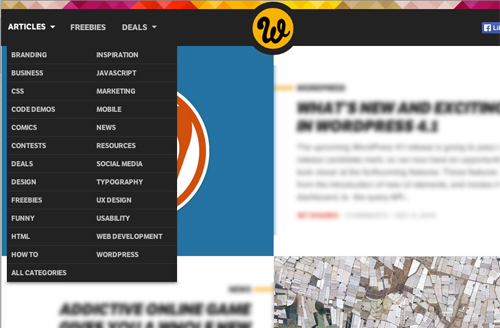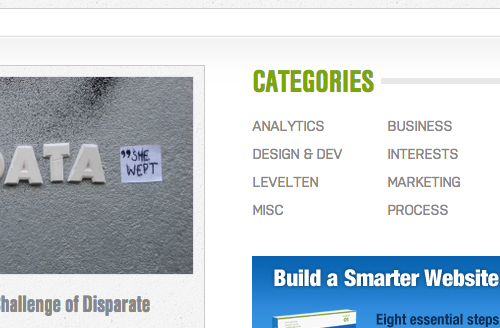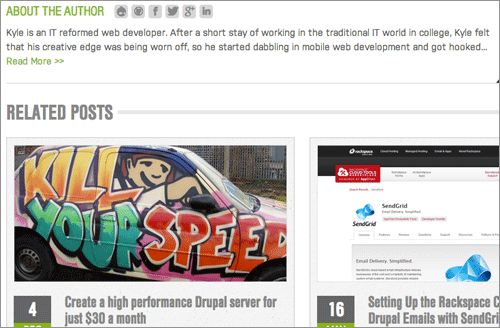
The Best Drupal Modules For Creating Engaging Blogs
Featured Photo By Markus Spiske
It’s no secret that engaging content provides many benefits to your business including increased traffic, brand recognition, better conversion and more leads. However, there are several lesser-known factors that directly impact the effectiveness great content has on a reader’s decision to bookmark your website, engage with your brand, or share your content with others. In this article we focus on Drupal modules that help create a great blog. After all, businesses that blog have 97% more inbound links and attract 55% more visitors than those that don't.
So what makes a great blog? While creating remarkable content is at the root of any great website, providing readers with intuitive navigation and tools they need to engage and interact with your content is essential for success. After all, how long will users stay on your site if they cannot find the information they need, or how engaged will readers be without engagement tools.
First and foremost, great blogs:
- Make it easy for readers to find the content they are interested in.
- Provide tools that allow readers to engage with their content.
- Offer additional articles and/or resources to their readers.
Businesses that blog have 97% more inbound links and attract 55% more visitors than those that don't.
Make it easy for readers to find the content they are interested in.
Great blogs allow readers to quickly scan and filter content by subject and author. This is especially true as your blog grows to hundreds, or thousands of articles with multiple areas of interest and authors. At this point, it is essential that your blog provides intuitive navigation, contextual clues and teaser content that allows your users to very quickly scan your pages for the content they are looking for.
Take the two examples below as sites that use different organizational patterns that allow users to quickly find the subjects and articles they are interested in:


Whether you decide to use categories as drop-downs in your primary navigation or as a secondary navigation within your page, your blog needs an organized structure that allows readers to quickly find the information they are looking for.
Organize your content with these modules.
Pathauto Module
For those of you who have been using Drupal for a while, this seems like a no-brainer, but for newbies, this is an essential module that doesn’t come with Drupal core.
The Pathauto module automatically generates URL/path aliases for various kinds of content (nodes, taxonomy terms, users) without requiring you to manually specify the path alias. This allows you to have URL aliases like /blog/category/page-title instead of /node/123. The aliases are based upon a "pattern" system that uses tokens, which you can change.
Pathauto not only saves you time since it automatically assigns URLs upon page creation, those URL structures provide important context clues to readers and search engines so that they understand the organizational structure of your content.
Taxonomy Module (Core)
Taxonomy is a core (comes with basic install) Drupal module that allows you to create vocabularies. Within each vocabulary, you can specify terms. You can then “tag” your content by those terms.
Take LevelTen’s blog for example. LevelTen created a vocabulary called “Blog Categories” and added the terms “Analytics, Business, Design & Development, Interests, Marketing, etc.” to that vocabulary. We can then associate those taxonomy terms with our Blog content type and reference (tag) each blog post we write with those terms. The result is our ability to provide organize Blog content in a meaningful way so that readers can more easily find the information they are looking for.
Views Module
Views is a massively popular Drupal module used by most site builders to filter and display content by content type, subject, date, author, etc. It is also a very, very robust module so I won't go into much detail in this post.
Views is also leveraged by other modules such as Display Suite and Blocker to create page layouts. Get it. Learn it. Use it.
Provide tools that allow readers to engage with your content.

Social sharing tools like the one above allow readers to easily promote your content to their social networks. Each share provides a new opportunity for traffic and conversion.
Great blogs allow their readers to engage with content via commenting, social sharing, subscribing and digesting. Without these components, you end up talking at your readers instead of with them. Think about it. When you find a great post, you want to share it with others. If you disagree with a post, you want to voice your opinion. If you find a website that offers great content, you want to bookmark and subscribe to it. So do your readers!
Give your readers the tools they need to engage with you. Not allowing for engagement is like attending a networking event and talking the entire time without allowing anyone else to respond. How well received would you be if you were that person?
Creating engagement on your Drupal blog starts with these modules:
Disqus
While Commenting is built into Drupal, I recommend using Disqus instead. Disqus is a commenting engine that provides simple integration into Drupal and allows readers to very easily comment on your blog posts. Additional advantages Disqus has over Drupal’s core commenting engine is that:
- It’s the most popular commenting engine on the web (2.5 million sites and counting).
- It provides a very low barrier to entry (provides logins via Disqus, Facebook, Twitter and Google accounts).
- It’s used on MANY high profile, non-Drupal blogs (Word Press, Blogger, Tumblr, etc.), so readers who engage are most likely already familiar with its interface.
Social Media Module
Social sharing is arguably the best way to promote your content on the Internet. Each person you share your content with has their network of contacts that you might potentially reach through re-tweets or additional shares/mentions.
The social media module helps integrate your website with social media sites such as Twitter, Facebook and Google+. It provides a centralized way of managing social media profile information and plug-in widgets such as social media follow and share buttons.
One of the nicest things about this particular module is that it comes with very intuitive setup wizard that allows you to very quickly add your profiles and select the sharing buttons you want. Not interested in this module? There are also Drupal modules for AddThis and ShareThis. Two other, very popular widgets for social sharing.
Watch Video for Setting up Social Media Module
Offer additional, related articles & resources to your readers.

Organizing your content helps your readers quickly find information. Providing additional articles and resources to your readers keeps them engaged with your content and increases the opportunity for conversion.
Great blogs are masters at offering additional resources and articles that supplement their content. Whether they provide internal links embedded within posts, or suggest related content after the post, readers appreciate additional recommendations. However, it is very important that the recommendations you provide are relevant and add value.
Modules To Keep Readers On Your Site!
Similar Entries Module
Similar Entries provides lists of links to site content related to the current node being viewed. Links can be displayed in standard blocks or as part of custom views. Similar content is located and rated using MySQL's FULLTEXT indexing for MyISAM tables. FULLTEXT is a special query that helps find relevant content in other nodes using a natural language search that interprets the search string as a phrase in natural human language.
LevelTen's Related Content block uses a combination of Views, Display Suite and Similar Entries.
Radioactivity Module
Like the Similar Entries module, Radioactivity can be combined with views to create views of blocks for content based on popularity of that content. This module provides a field type which can be used as a "hotness" metric or a regular view counter for entities and for much much more. In essence, blog posts receiving attention (views or actions defined by Rules) float to the top of the list while inactive ones float to the bottom and eventually fall off.
Final Thoughts
Drupal is an extremely flexible content management system that offers dozens of powerful tools for creating great blogs. The challenge for many developers is understanding what great blogs offer and what tools Drupal provides in order to construct a great blog.
I hope this article provided you with insight and newly recommended modules that you can use within your blog to increase traffic, retention and conversion. Focus and your readers and offer them the tools they need to successfully find what they are looking for and they will reward you for it!
Feel free to leave comments and let me know what other modules you have found to be useful in your pursuit of creating a great blog!!!

